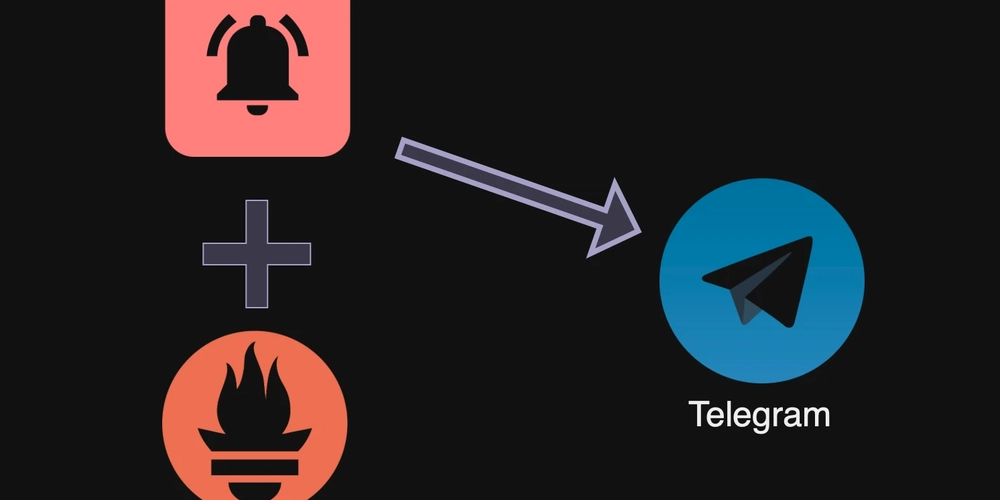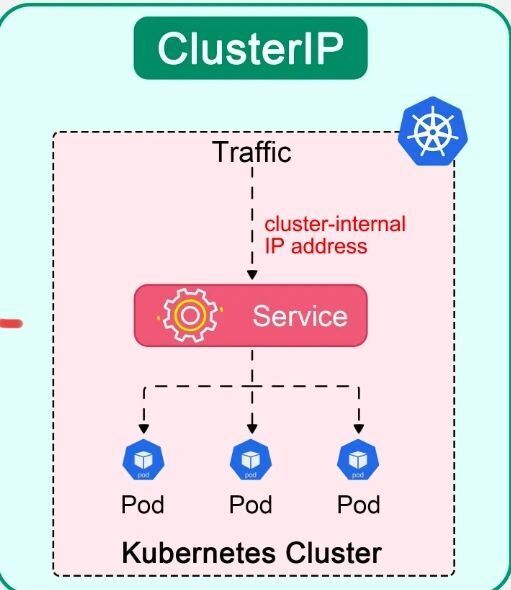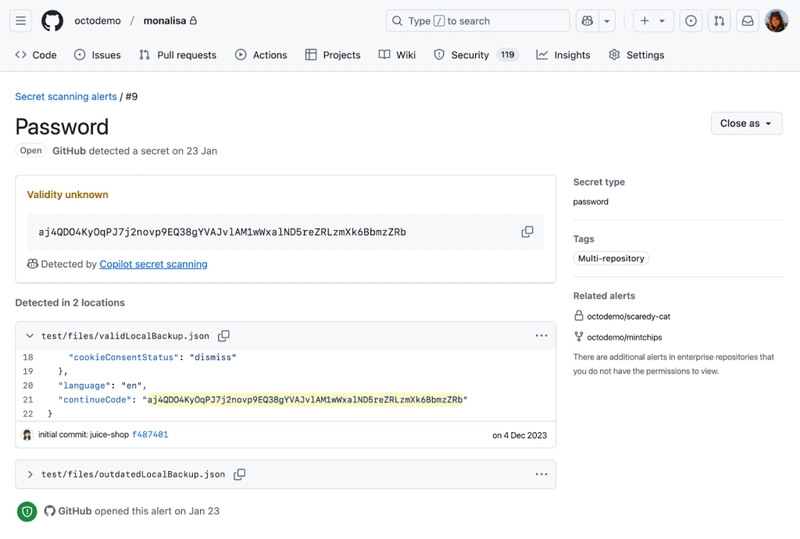Alertmanager with Telegram for Prometheus-Stack in K8S
How to create a Telegram bot To create a Telegram bot, you'll need to have the Telegram app installed on your computer. If you don't have it already, you can download it from the Telegram website. Connect to BotFather and hit the /newbot and follow the instruction BotFather is a bot created by Telegram that allows you to create and manage your own bots. To connect to BotFather, search for "@botfather" in the Telegram app and click on the result to start a conversation. In case you’d like a more detailed walkthrough, we suggest you take a look at this amazing tutorial prepared by Telegram. Save the bot access token, it will be used in seting up telegram receiver in alertmanager.Also, join the bot to a channel/group to get the messages. To get a info about the bot The bot prefix has to be in the URL before the bot. BOT_ACCESS_TOKEN: it is provided by the "@BotFather". curl https://api.telegram.org/bot/getMe | jq . { "ok": true, "result": { "id": , "is_bot": true, "first_name": , "username": , "can_join_groups": true, "can_read_all_group_messages": false, "supports_inline_queries": false, "can_connect_to_business": false, "has_main_web_app": false } } CHAT_ID: After joining the bot to a channel/group , get the chat_id which you want to send message on behalf of the bot to that channel/group . curl https://api.telegram.org/bot/getUpdates | jq . To Send a test message curl -X POST "https://api.telegram.org/bot/sendMessage" -d "chat_id=" -d "text=Hello, World!" Let's say the prometheus-stack is installed via helm or its operator in K8S cluster. The release name will be used in many objects like AlertmanagerConfig, ServiceMonitor, PodMonitor, etc ... which the prometheus operator be able to select objects and add configs to the prometheus or alertmanager . get release list in the prometheus namespace helm list -n prometheus NAME NAMESPACE REVISION UPDATED STATUS CHART APP VERSION prometheus-stack prometheus 1 2025-03-08 23:34:47.082601345 +0330 +0330 deployed kube-prometheus-stack-68.4.4 v0.79.2 AlertmanagerConfig to define the Telegram receiver GROUP: monitoring.coreos.com KIND: AlertmanagerConfig VERSION: v1alpha1 DESCRIPTION: AlertmanagerConfig configures the Prometheus Alertmanager, specifying how alerts should be grouped, inhibited and notified to external systems. telegramConfigs kubectl explain AlertmanagerConfig.spec.receivers.telegramConfigs GROUP: monitoring.coreos.com KIND: AlertmanagerConfig VERSION: v1alpha1 FIELD: telegramConfigs DESCRIPTION: List of Telegram configurations. TelegramConfig configures notifications via Telegram. See https://prometheus.io/docs/alerting/latest/configuration/#telegram_config botToken Telegram bot token. It is mutually exclusive with `botTokenFile`. The secret needs to be in the same namespace as the AlertmanagerConfig object and accessible by the Prometheus Operator. Either `botToken` or `botTokenFile` is required. chatID -required- The Telegram chat ID. parseMode enum: MarkdownV2, Markdown, HTML Parse mode for telegram message sendResolved Whether to notify about resolved alerts. The botToken has to be a Secret in the same namespace as the AlertmanagerConfig. lets say we name the secret file name telegram-bot-token-secret.yaml apiVersion: v1 kind: Secret metadata: name: telegram-bot-token-secret # secret name will be referred in botToken in AlertmanagerConfig namespace: prometheus # same `namespace` as the `AlertmanagerConfig`. type: Opaque data: # bot-token will be used as key for botToken in AlermanagerConfig. bot-token: # example # echo -n "" | base64 (Token without bot prefix, exactly the token get from bot_father) Create the Secret kubectl apply -f telegram-bot-token-secret.yaml -n prometheus AlertmanagerConfig Create a new file named alertmanagerconfig-telegram.yaml with contents: --- apiVersion: monitoring.coreos.com/v1alpha1 kind: AlertmanagerConfig metadata: name: alert-config-telegram namespace: prometheus labels: release: prometheus-stack # the release label should be the exact label of the prometheus helm release label alertmanagerConfig: alertmanager-telegram # custom label and also set this label to alertmanager in the prometheus-stack values.yaml spec: route: groupBy: ["alertname","job","namespace"] # it could be other labels to be grouped by groupWait: 30s groupInterval: 5m repeatInterval: 1h receiver: "telegram" routes: - receiver: "telegram" matchers: - name: severity matchType: "=~" value: "warning|critical" receivers: - name

How to create a Telegram bot
To create a Telegram bot, you'll need to have the Telegram app installed on your computer. If you don't have it already, you can download it from the Telegram website.
-
Connect to BotFather and hit the
/newbotand follow the instructionBotFather is a bot created by Telegram that allows you to create and manage your own bots. To connect to BotFather, search for "@botfather" in the Telegram app and click on the result to start a conversation.
In case you’d like a more detailed walkthrough, we suggest you take a look at this amazing tutorial prepared by Telegram.
Save the bot access token, it will be used in seting up telegram receiver in alertmanager.Also, join the bot to a channel/group to get the messages.
To get a info about the bot
The
botprefix has to be in the URL before the
bot.
-
BOT_ACCESS_TOKEN: it is provided by the"@BotFather".
curl https://api.telegram.org/bot/getMe | jq .
{
"ok": true,
"result": {
"id": -
CHAT_ID: After joining the bot to a channel/group , get thechat_idwhich you want to send message on behalf of the bot to that channel/group .
curl https://api.telegram.org/bot/getUpdates | jq .
To Send a test message
curl -X POST "https://api.telegram.org/bot/sendMessage" -d "chat_id=" -d "text=Hello, World!"
Let's say the prometheus-stack is installed via helm or its operator in K8S cluster.
The release name will be used in many objects like AlertmanagerConfig, ServiceMonitor, PodMonitor, etc ... which the prometheus operator be able to select objects and add configs to the prometheus or alertmanager .
get release list in the prometheus namespace
helm list -n prometheus
NAME NAMESPACE REVISION UPDATED STATUS CHART APP VERSION
prometheus-stack prometheus 1 2025-03-08 23:34:47.082601345 +0330 +0330 deployed kube-prometheus-stack-68.4.4 v0.79.2
AlertmanagerConfig to define the Telegram receiver
GROUP: monitoring.coreos.com
KIND: AlertmanagerConfig
VERSION: v1alpha1
DESCRIPTION:
AlertmanagerConfig configures the Prometheus Alertmanager,
specifying how alerts should be grouped, inhibited and notified to external
systems.
telegramConfigs
kubectl explain AlertmanagerConfig.spec.receivers.telegramConfigs
GROUP: monitoring.coreos.com
KIND: AlertmanagerConfig
VERSION: v1alpha1
FIELD: telegramConfigs <[]Object>
DESCRIPTION:
List of Telegram configurations.
TelegramConfig configures notifications via Telegram.
See
https://prometheus.io/docs/alerting/latest/configuration/#telegram_config
botToken The botToken has to be a Secret in the same namespace as the AlertmanagerConfig. lets say we name the secret file name telegram-bot-token-secret.yaml
apiVersion: v1
kind: Secret
metadata:
name: telegram-bot-token-secret # secret name will be referred in botToken in AlertmanagerConfig
namespace: prometheus # same `namespace` as the `AlertmanagerConfig`.
type: Opaque
data:
# bot-token will be used as key for botToken in AlermanagerConfig.
bot-token: " | base64 (Token without bot prefix, exactly the token get from bot_father)
- Create the
Secret
kubectl apply -f telegram-bot-token-secret.yaml -n prometheus
AlertmanagerConfig
Create a new file named alertmanagerconfig-telegram.yaml with contents:
---
apiVersion: monitoring.coreos.com/v1alpha1
kind: AlertmanagerConfig
metadata:
name: alert-config-telegram
namespace: prometheus
labels:
release: prometheus-stack # the release label should be the exact label of the prometheus helm release label
alertmanagerConfig: alertmanager-telegram # custom label and also set this label to alertmanager in the prometheus-stack values.yaml
spec:
route:
groupBy: ["alertname","job","namespace"] # it could be other labels to be grouped by
groupWait: 30s
groupInterval: 5m
repeatInterval: 1h
receiver: "telegram"
routes:
- receiver: "telegram"
matchers:
- name: severity
matchType: "=~"
value: "warning|critical"
receivers:
- name: telegram
telegramConfigs:
- botToken:
name: telegram-bot-token-secret # refer to the secret name has been created before
key: bot-token # bot-token data in the secret
chatID: - Create the
AlertmanagerConfig
kubectl apply -f alertmanagerconfig-telegram.yaml -n prometheus
The alertmanager changes in theprometheus-stack values.yaml
- Templates in
alertmanager.templateFileswill be mounted in/etc/alertmanager/config/*.tmpl.
The
telegram.tmplwill be mounted as/etc/alertmanager/config/telegram.tmpl, with defining the{{ define "telegram.default.message" }}there is no need to definemessagein theAlertmanagerConfig.spec.receivers.telegramConfigs. with that the default template for the telegram will be overwritten.
alertmanager:
templateFiles:
telegram.tmpl: |-
{{ define "telegram.default.message" }}
{{- if eq .Status "firing" -}}
{{- if eq .CommonLabels.severity "critical" -}}











































































































































































![[The AI Show Episode 142]: ChatGPT’s New Image Generator, Studio Ghibli Craze and Backlash, Gemini 2.5, OpenAI Academy, 4o Updates, Vibe Marketing & xAI Acquires X](https://www.marketingaiinstitute.com/hubfs/ep%20142%20cover.png)




























































































































![[DEALS] The Premium Learn to Code Certification Bundle (97% off) & Other Deals Up To 98% Off – Offers End Soon!](https://www.javacodegeeks.com/wp-content/uploads/2012/12/jcg-logo.jpg)


![From drop-out to software architect with Jason Lengstorf [Podcast #167]](https://cdn.hashnode.com/res/hashnode/image/upload/v1743796461357/f3d19cd7-e6f5-4d7c-8bfc-eb974bc8da68.png?#)








































































































.png?#)

































_Christophe_Coat_Alamy.jpg?#)
 (1).webp?#)





































































































![Apple Considers Delaying Smart Home Hub Until 2026 [Gurman]](https://www.iclarified.com/images/news/96946/96946/96946-640.jpg)
![iPhone 17 Pro Won't Feature Two-Toned Back [Gurman]](https://www.iclarified.com/images/news/96944/96944/96944-640.jpg)
![Tariffs Threaten Apple's $999 iPhone Price Point in the U.S. [Gurman]](https://www.iclarified.com/images/news/96943/96943/96943-640.jpg)




































































































































